[Goldenweeds: The Genus Pyrrocoma with Discoid Flower Heads East of the Cascade Mountains of Oregon and Washington]
Columbia Goldenweed, Large-flowered Goldenweed, Rayless Goldenweed
Pyrrocoma carthamoides var. carthamoides
Synonyms: Haplopappus carthamoides ssp. carthamoides, Haplopappus carthamoides var. carthamoides, Haplopappus carthamoides ssp. rigidus
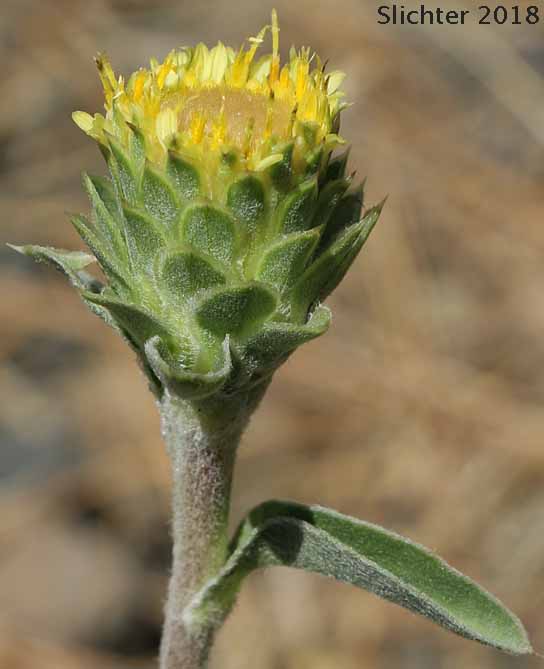
A close-up view of the flower head of large-flowered goldenweed (var. carthamoides) as seen from along the Stubblefield Trail, Turnbull National Wildlife Refuge.........July4, 2018.
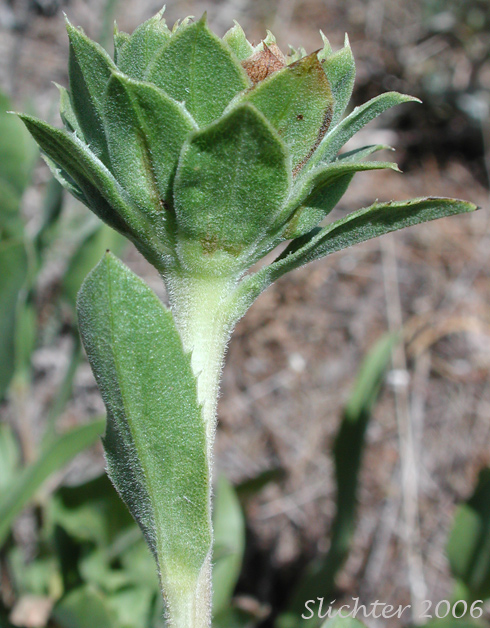 The photo at right shows a close-up of the large, ovate-shaped involucral bracts of large-flowered goldenweed (var. carthamoides). Photographed in the Columbia Hills of southwestern Klickitat County, Washington..........July 7, 2006.
The photo at right shows a close-up of the large, ovate-shaped involucral bracts of large-flowered goldenweed (var. carthamoides). Photographed in the Columbia Hills of southwestern Klickitat County, Washington..........July 7, 2006.
Characteristics:
Large-flowered goldenweed is a prostrate, perennial wildflower with one to several stems, large oblanceolate leaves, and wide flower heads surrounded by widely triangular bracts. The stems range from 5-60 cm in length. The basal leaves are tufted, spiny-toothed to entire, and generally 5-40 cm long and 5-40 mm wide. The stems may sometimes be very leafy, or instead, may show a reduction of leaf size and number up the stem.
The flower heads are solitary, yellow, and have both disk and ray flowers. The 0-30 ray flowers may not be readily noticeable, and may measure up to 7 mm long. The very numerous disk flowers range from 10-14 mm long. Blooms from late June into early August.
Habitat:
Large-flowered goldenweed can be found on rocky flats and open, rocky or gravelly slopes. It is often found mixed in with sagebrush or in
forest openings.
Range:
Large-flowered goldenweed is found mostly east of the Cascade summits of Washington and Oregon, eastward to northwest
Montana, central and southwest Idaho, and northeastern Nevada.
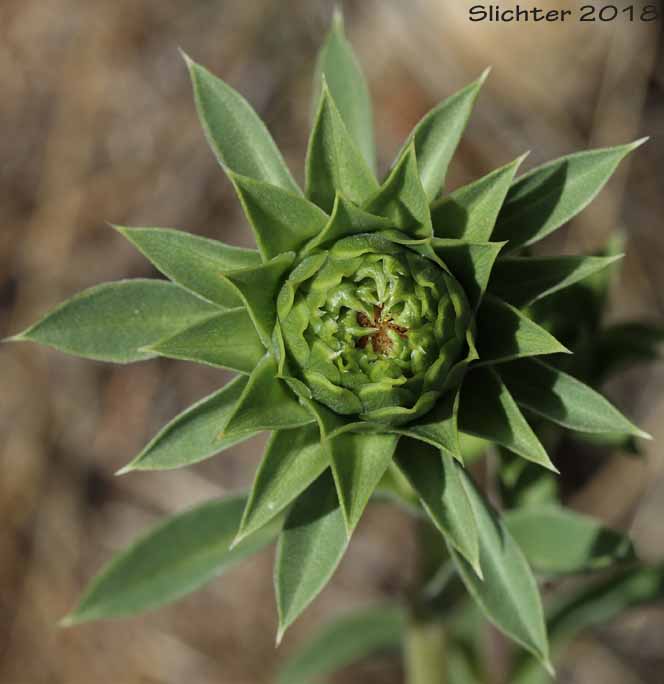
Large-flowered goldenweed as seen in bud on ice age flood sandbars between the Little Spokane River and Five Mile, Spokane County, WA.......June 29, 2018.
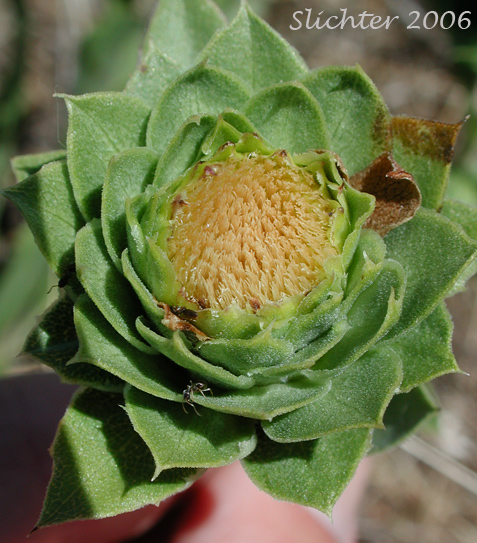
The photo above shows a close-up view of the flower head of large-flowered goldenweed (var. carthamoides) as seen from the Columbia Hills of southwestern Klickitat County, Washington.........July 7, 2006.
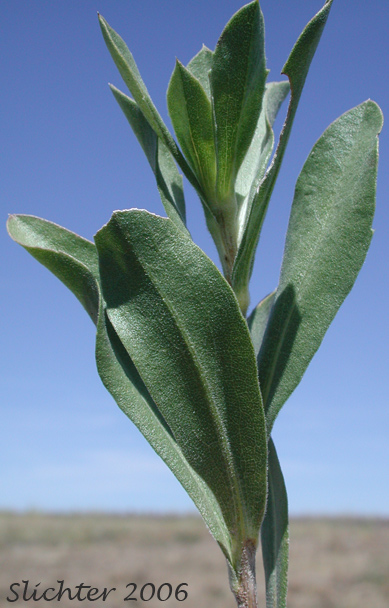
The photo above shows a close-up of the rough, glaucous stem leaves of large-flowered goldenweed (var. carthamoides) as seen in the Columbia Hills of southwestern Klickitat County, Washington...........July 7, 2006.
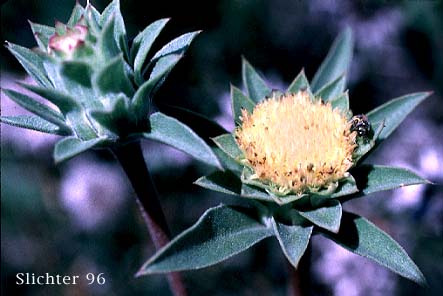
Large-flowered goldenweed (var. carthamoides) from Hunter's Prairie, near Bear Springs R.S., Mt Hood N.F..........June 1995.
Paul Slichter
 The photo at right shows a close-up of the large, ovate-shaped involucral bracts of large-flowered goldenweed (var. carthamoides). Photographed in the Columbia Hills of southwestern Klickitat County, Washington..........July 7, 2006.
The photo at right shows a close-up of the large, ovate-shaped involucral bracts of large-flowered goldenweed (var. carthamoides). Photographed in the Columbia Hills of southwestern Klickitat County, Washington..........July 7, 2006.